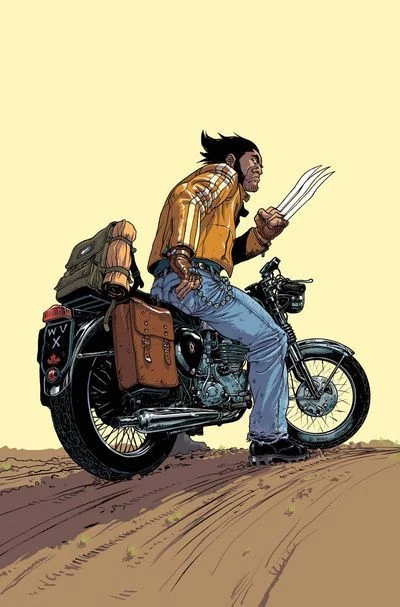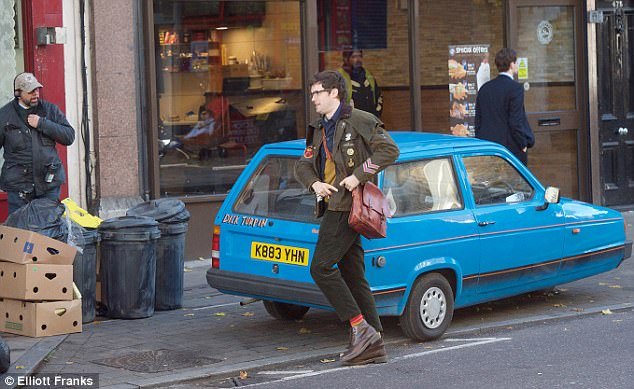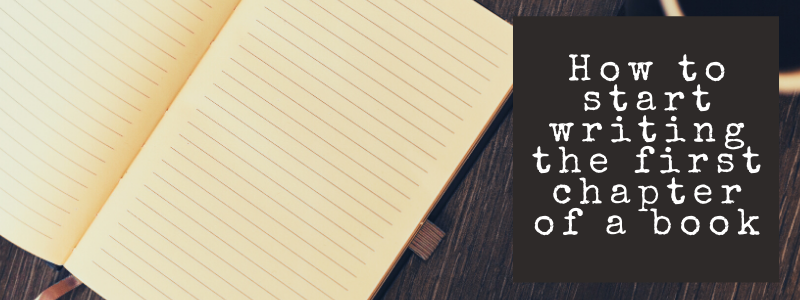Four things about transportation in stories
How do you make use of transportation in your writing?
One
of the wonderful things about writing obsessive level of control authors can
exert over their story. Everything we write about can and should achieve something in
the story. I’ve been thinking recently about how this might be done in relation
to movement and transport in stories. Every mode of transport, every detail
reflects a choice by the author and communicates something to the reader. Here
are four of my idle thoughts on this topic.
1. Heroes ride solo – sometimes.
I’m
talking about Gandalf and Shadowfax. I’m talking Luke and his X-Wing (Shush
R2D2 – you’re basically a satnav). I’m talking Sir Gawain travelling south to
find the Green Knight. The one person mode of transport is an excellent shorthand
for showing a character as an intrepid adventurer, unfazed by the big bad world
around them. Who’s the one member of the X-Men who could quite happily get by
on their own? And what does he ride? Exactly.

2. Movement shows mastery
As humans we exist in a dangerous, chaotic, confusing world.
Those who can exert control over that world are to be admired. How do we show
control over our environment? Physical strength is one way. Wealth is another.
Influence? Certainly. However, transport is a viable literary shorthand for a
kind of environmental mastery.
 In Dune, Paul Atreides is left alone and helpless in the
desert, surrounded by giant monsters capable of killing and destroying anything
they meet. He is cut off from his technology and wealth. However, he later
transforms, showing his mastery of Fremen culture by riding the giant sandworms,
the ‘Makers’, by himself. It represents his mastery of the planet itself, his environment.
In Dune, Paul Atreides is left alone and helpless in the
desert, surrounded by giant monsters capable of killing and destroying anything
they meet. He is cut off from his technology and wealth. However, he later
transforms, showing his mastery of Fremen culture by riding the giant sandworms,
the ‘Makers’, by himself. It represents his mastery of the planet itself, his environment.
Similarly in 20,000 Leagues Under the Sea Captain Nemo is shown
to be a master of his environment, elevated above other people by his
scientific understanding. How is this done? Through his submarine, the
Nautilus.
Whilst I have focused on science fiction above, the same point
could equally be made elsewhere, Gatsby drives his Rolls-Royce Tourer after all.
3. Transportation be used to connect with the reader – or
disconnect with them
Consider Katniss Everdeen as she travels across Panem to the
Capitol. How does she travel? By train of course. She could have been driven.
Or flown. Instead she travels by train. Why? A clue may be found in considering
who the books are aimed towards – teen readers. We are supposed to connect with
Katniss and Peeta and here transportation allows a point of familiarity. Most
teens haven’t travelled in luxury cars. Many teen haven’t flown. However, by
age 14 I suspect most teens have had a long train journey or two. By moving
Katniss and Peeta by train it gives the reader an accessible point of
connection.
By contrast it is also possible to do the opposite. To make
a character seem stranger or more otherworldly. Consider Willy Wonka and the two
forms of transport described in the book. The boat ride in the tunnel and the
glass elevator. Two familiar forms of transportation given a surreal spin that
bewilders the reader whilst emphasising the ‘otherness’ of Willy Wonka and his
factory.
4. Transportation reflects characters.
This isn’t a ground-breaking point, but moving around can
tell us something about a character.
Example 1 – Harry Potter & his broom.
 Harry is skilled on the broomstick. So much so he becomes
the Gryffindor Seeker. There are many forms of transport in Rowling’s magical
world, but there is no closer association than Harry and the Nimbus 2000. Why
make this choice? It could be argued that Harry’s association with the
broomstick and his role as a seeker foreshadows his narrative arc as a whole. The
broomstick is a vehicle for one. It requires independence, skill and
self-reliance (see point 1). It also acts to cut Harry off from others. He is around
others but ultimately he is alone, high up, riding a stick. Similarly, as the
Seeker Harry is further cut off from the others. Whilst the rest of team compete
as a unit, Harry must act alone. He has a private game to focus on where the
stakes are higher, where he must face off against an opposing number in a
winner-takes-all contest.
Harry is skilled on the broomstick. So much so he becomes
the Gryffindor Seeker. There are many forms of transport in Rowling’s magical
world, but there is no closer association than Harry and the Nimbus 2000. Why
make this choice? It could be argued that Harry’s association with the
broomstick and his role as a seeker foreshadows his narrative arc as a whole. The
broomstick is a vehicle for one. It requires independence, skill and
self-reliance (see point 1). It also acts to cut Harry off from others. He is around
others but ultimately he is alone, high up, riding a stick. Similarly, as the
Seeker Harry is further cut off from the others. Whilst the rest of team compete
as a unit, Harry must act alone. He has a private game to focus on where the
stakes are higher, where he must face off against an opposing number in a
winner-takes-all contest.
Example 2 – Crowley and Newton Pulsifer
 Crowley, drives an original, black, 1926 Bentley. Immaculate
body work. It can travel at 90mph down Oxford Road. Through fire. Occasionally
it flies.
Crowley, drives an original, black, 1926 Bentley. Immaculate
body work. It can travel at 90mph down Oxford Road. Through fire. Occasionally
it flies. On the other hand Newton Pulsifer drives a Japanese Wasabi
named ‘Dick Turpin’ (it holds up traffic…) It has a three speed gearbox and an
800cc engine. The radio only picks up Radio Pyogyang. External damage is difficult
to spot because the bodywork looks so wretched anyway.
On the other hand Newton Pulsifer drives a Japanese Wasabi
named ‘Dick Turpin’ (it holds up traffic…) It has a three speed gearbox and an
800cc engine. The radio only picks up Radio Pyogyang. External damage is difficult
to spot because the bodywork looks so wretched anyway.
I ask you, what can we infer about Crowley and Pulsifer from
their vehicles? Everything we need to. They act as literary shorthand devices.
***
I could go on, examining how transportation can be used to delineate
one world from another, how it can be a character in and of itself or how it can
be a framing device for an entire story. However, I worry that I’ll be writing
forever in that case. Don't even get me started on the TARDIS.
Feel free to drop a comment below or find me on Twitter
@gemjacksonauthor.
GJ


Comments
Post a Comment